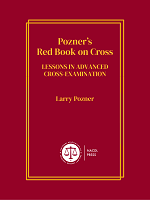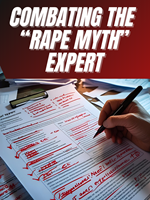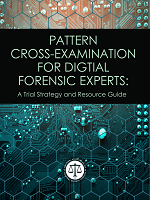Access to The Champion archive is one of many exclusive member benefits. It’s normally restricted to just NACDL members. However, this content, and others like it, is available to everyone in order to educate the public on why criminal justice reform is a necessity.
Modern communications technology has transformed the way that people interact on a daily basis; and it is no great surprise that the rush to new forms of communications — remote conferencing, group video calls, etc. — during the current pandemic has helped keep people connected and the economy moving. However, even the best technology has its limitations, and as courts around the country grapple with their backlogged dockets and discussions regarding reopening get underway, it is of paramount importance that we do not undermine the constitutional rights guaranteed to criminal defendants for the sake of expediency.
If we are not cautious about how the justice system reacts to the need for social distancing and the myriad challenges presented by COVID-19, the criminally accused will necessarily be forced to choose between a speedy, albeit constitutionally “light,” adjudication or a full and fair trial that endangers the health of all those involved. Indeed, the push to reopen the courts could become a justification for across-the-board limitations on an accused’s rights to Due Process, Confrontation, Effective Assistance of Counsel, Equal Protection, and other essential trial rights. In an effort to define the “new normal,” we cannot allow expedient solutions to backlogged dockets to subvert the Constitution by sanctioning criminal proceedings that fall far short of constitutional and statutory protections intended to ensure fair trials.
Faced with the prospect of virtual courtrooms and the erosion of the right to trial, NACDL has adopted core principles necessary to ensure that the bedrock constitutional tenets upon which our system of justice is built survive the current pandemic.{1} 1 https://nacdl.org/getattachment/56802001-1bb9-4edd-814d-c8d5c41346f3/criminal-court-reopening-and-public-health-in-the-covid-19-era.pdf.
The Supreme Court Rejected Two-Way Video Presentation of Remote Witness Testimony
The confrontation clause provides a criminal defendant with the right of cross-examination,{2} 2 See Pennsylvania v. Ritchie, 480 U.S. 39, 51 (1987); Delaware v. Van Arsdall, 475 U.S. 673, 678-79 (1986); Chambers v. Mississippi, 410 U.S. 284, 295 (1973); Dowdell v. United States, 221 U.S. 325, 330 (1911). the right to have the jury observe the demeanor{3} 3 See California v. Green, 399 U.S. 149, 158 (1970); Mattox v. United States, 156 U.S. 237, 242-43 (1895). of a damaging witness, and the right to a face-to-face encounter with his or her accuser.{4} 4 See Ritchie, 480 U.S. at 51. The right of confrontation prohibits trials in absentia. Absent a waiver, the accused is entitled to confront his accusers, that is, the witnesses against him. In Coy v. Iowa,{5} 5 Coy v. Iowa, 487 U.S. 1012, 108 S. Ct. 2798 (1988). the Supreme Court explained the importance of this right.
It is always more difficult to tell a lie about a person “to his face” than “behind his back.” In the former context, even if the lie is told, it will often be told less convincingly. The Confrontation Clause does not, of course, compel the witness to fix his eyes upon the defendant; he may studiously look elsewhere, but the trier of fact will draw its own conclusions.{6} 6 Id. In Coy v. Iowa, the Supreme Court held that the placement of a screen between a defendant and an allegedly sexually abused child witness during the child’s testimony, which prevented the witness from observing the defendant, violated the defendant’s constitutional right to a face-to-face confrontation. Id. at 2802.
Writing for the Court, Justice Scalia recognized that it is the defendant’s right to a face-to-face encounter with an adversary witness that is at the “core” of a defendant’s confrontation rights,{7} 7 Id. at 2801. as that right serves to “‘ensure the integrity of the fact-finding process.’”{8} 8 Coy, 108 S. Ct. at 2802 (quoting Kentucky v. Stincer, 107 S. Ct. 2658, 2662 (1987)). Justice Scalia asserted that “confrontation -- endnote The Court found that exceptions to physical confrontation will be permitted only if the procedural alterations do not impermissibly impinge upon the defendant’s right to a fair trial.{9} 9 Coy, 108 S. Ct. at 2802. Additionally, the Coy Court indicated that for an exception to be permissible, a finding must be made that it advances an important public policy.{10} 10 Id. at 2803. Therefore, under Coy, the Constitution requires that before denying a defendant the right to a face-to-face encounter with an adverse witness, the court must make a clear finding that (1) the alternative procedures are necessary to safeguard an important public policy; and (2) they are sufficient to ensure a fair trial.{11} 11 Defendant’s Right to Confront (1988) at 131.
In April 2002, the U.S. Supreme Court considered a proposed amendment to Rule 26 of the Federal Rules of Criminal Procedure that would have permitted live two-way video testimony when a witness is unavailable to testify in court.{12} 12 See Order of the Supreme Court, 207 F.R.D. 89, 90 (2002). Derived from the Rule 15 standard,{13} 13 See id. at 96 (Breyer, J., dissenting). the proposal would have allowed the use of remote video testimony in exceptional circumstances.{14} 14 Proposed Amendments to Rule 26(b) of the Federal Rules of Criminal Procedure (Apr. 29, 2002). The proposal declared, -- endnote Citing possible Confrontation Clause concerns, the Supreme Court rejected the proposal.{15} 15 See Order of the Supreme Court, 207 F.R.D. 89, 96 (2002) (Breyer, J., dissenting) (rejecting proposed amendments to Rule 26(b) of the Federal Rules of Criminal Procedure). The Court’s decision left the current Rule 26 intact, which provides that “[i]n every [federal criminal] trial the testimony of witnesses must be taken in open court.”{16} 16 Fed. R. Crim. P. 26(b) (emphasis added). There are two broad exceptions to Rule 26 where other federal laws excuse the witness’s personal -- endnote
The amendment’s defeat fell squarely in line with the Court’s longtime recognition that the “literal right to ‘confront’ [] witness[es] at the time of trial … forms the core of the values furthered by the Confrontation Clause.”{17} 17 California v. Green, 399 U.S. 149, 157, 90 S. Ct. 1930, 26 L.Ed.2d 489 (1970). Indeed, in rejecting the revision of Rule 26, Justice Scalia poignantly stated that “the Judicial Conference’s proposed [Rule] 26(b) is of dubious validity under the Confrontation Clause.”{18} 18 Amendments to Rule 26(b) of the Federal Rules of Criminal Procedure, 207 F.R.D. 93 (2002) (internal citations omitted).
What is clear is that that two-way video procedures fail to meet even the minimal standards articulated by Rule 15. Remote proceedings provide even fewer protections than a Rule 15 deposition, which allows the defendant to physically face his accuser — a right that the Supreme Court has deemed the “core” of the guarantees afforded by the Confrontation Clause.{19} 19 Coy v. Iowa, 108 S. Ct. 2798 (1988); see California v. Green, 399 U.S. 149, 157, 90 S. Ct. 1930, 26 L.Ed.2d 489 (1970) (explaining that the “literal right to ‘confront’ the witness at the time of trial … forms the core of the values furthered by the Confrontation Clause”).
Around the country, chief judges and court executives are developing protocols for how to safely resume jury trials. However, given the backdrop of the global pandemic, courts are turning to virtual proceedings as a solution to backlogged dockets and resumption of court operations.
The Digital Divide
Not only are platforms like Zoom not a substitute for face-to-face confrontation, but, if they were, defendants’ ability to exercise their right to be present for trial or a related proceeding would be unfairly and unconstitutionally dependent on their location and the technical capabilities of both the courthouse infrastructure and the individual judge’s technical competencies or biases.
Furthermore, a defendant’s ability to engage in the proceedings (if he is not in custody — a situation that poses its own technological hurdles), as well as the ability of his family and friends, and the ability of individual witnesses, jurors and jurists, would be inequitably impacted by the stark digital divide still present in this country. Despite progress made over the past several decades, a clear divide and uneven distribution still exists among communities as to the availability and use of Information and Communication Technologies (“ICT”). For example, rural Americans have made large gains in adopting digital technology over the past decade, but they generally remain less likely than urban or suburban adults to have home broadband or own a smartphone.{20} 20 Andrew Perrin, Digital Gap Between Rural and Nonrural America Persists, May 31, 2019, available at -- endnote
During this time of national emergency, families are hunkered down at home together for much if not all of the day sharing limited resources. The country also faces an education crisis as school- and college-age children attempt to approximate their curriculum at home on the limited electronic devices available, while many adults are equally dependent on these same devices for their livelihoods as they attempt to work from home. Not only does this stress broadband capacity but it also forces families to choose whom to allocate scares digital resources to at any given time during the day. A juror in this situation would be forced to make an impossible choice and most likely (and justifiably) request to be excused from service on the jury. This would necessarily exclude a large number of potential jurors from the available jury pool and potentially and unfairly skew the jury towards more affluent suburban individuals without children in the home and away from less affluent, rural, or young parent jurors. In addition to the digital divide, the national emergency would also remove many other categories of workers from the jury pool including nurses, first responders, and delivery persons, again skewing any potential jury.
Lost in Translation
Various “intangible elements” of confrontation are “reduced or even eliminated” by all forms of video testimony.{21} 21 United States v. Gigante, 166 F.3d 75, 81 (2d Cir. 1999); see also United States v. Bordeaux, 400 F.3d 548, 554 (8th Cir. 2005) (noting that a “confrontation” via a two-way closed-circuit television is not constitutionally equivalent to a face-to-face confrontation). For instance, it is far more difficult to lie when looking directly upon the accused in person and within close proximity or at least within the same room. Physical confrontation includes intangible elements having nothing to do with the reliability of the evidence presented. The Coy Court, for example, noted that something deep in human nature regards face-to-face confrontation as “essential to a fair trial.”{22} 22 Coy v. Iowa, 487 U.S. 1012, 1017 (1988). Justice Scalia noted similar concerns in rejecting the Proposed Rule 26(b), stating:
[A] purpose of the Confrontation Clause is ordinarily to compel accusers to make their accusations in the defendant’s presence — which is not equivalent to making them in a room that contains a television set beaming electrons that portray the defendant’s image. Virtual confrontation might be sufficient to protect virtual constitutional rights; I doubt whether it is sufficient to protect real ones.{23} 23 See Order of the Supreme Court, 207 F.R.D. 89, 93-94 (2002).
Virtual confrontation also impairs effective cross-examination due to the inevitable delay in transmission and sense of distance it creates.{24} 24 Anne Bowen Poulin, Criminal Justice and Videoconferencing Technology: The Remote Defendant, 78 Tul. L. Rev. 1089, 1118 (2004) (“There is ample evidence -- endnote The ability of the factfinder to accurately gauge the credibility of the witness is also lost, including subtle observations like a shift in the seat or a sudden withdrawal of eye contact or the ability to watch the defendant react to the witness’s testimony. These observations inform the ability of the factfinder to find a witness credible and are necessary for a meaningful credibility assessment. Research shows that video conference technology is not a sufficient substitute for such in-person physical observations.{25} 25 That body of literature suggests that videoconferencing may have a negative impact on the way those in court perceive the defendant as well as -- endnote Virtual confrontation undoubtedly creates a diminished sense of confrontation due to the sheer distance and sense of insulation caused by testifying remotely.{26} 26 “Commentators have noted that the atmosphere of the courtroom may be an inducement to witnesses to tell the truth. Similarly, it may encourage the defendant to take the proceedings seriously and adopt an appropriate demeanor.” Anne Bowen Poulin, supra note 23, at 1125 (citations omitted).
In Stoner v. Sowders, the U.S. Court of Appeals for the Sixth Circuit highlighted the distinction between virtual and in-person confrontation:
[With virtual confrontation] the jury and the judge never actually see the witness. The witness is not confronted in the courtroom situation. The immediacy of a living person is lost. In the most important affairs of life, people approach each other in person, and television is no substitute for direct personal contact. Video tape is still a picture, not a life, and it does not come within the rule of the Confrontation Clause which insists on real life where possible, not simply a close approximation.{27} 27 Stoner v. Sowders, 997 F.2d 209, 213 (6th Cir. 1993).
Furthermore, using video technology to bring the defendant to the courtroom affects the way in which the defendant is perceived by those in court.{28} 28 “Unfortunately, videoconferencing does not effectively convey the full range of nonverbal cues. Videoconferencing may distort -- endnote It also impacts the relationship between defendant and defense counsel and the ability of defense counsel to provide appropriate representation to the remote defendant. Equally important, the use of videoconferencing alters the defendant’s experience of the justice process.{29} 29 “The defendant must see the judge and the defense attorney at all times but should also be able to see the prosecutor and -- endnote In-person proceedings and face-to-face confrontation ensure the appearance (as well as the reality) of a fair proceeding, making the outcome more acceptable to the defendant and to society.
Courts must consider to what extent face-to-face confrontation is compromised by remote video procedure when deciding whether to permit it. Unlike those exceptional circumstances contemplated under Rule 15, the current court emergency is not an absolute impediment to face-to-face live testimony. It will eventually subside, and live testimony will safely resume under constitutionally permissible conditions. “The importance of presenting live testimony in court cannot be forgotten. The very ceremony of trial and the presence of the factfinder may exert a powerful force for truth-telling. The opportunity to judge the demeanor of a witness face-to-face is accorded great value in our tradition.”{30} 30 Fed. R. Civ. P. 43, Advisory Committee Notes to 1996 Amendments. Accordingly, the only circumstance in which remote trials in criminal cases would be considered a necessity is when an accused seeking a speedy trial gives informed and voluntary consent with the assistance of counsel and adequate safeguards.
About the Author
Nina J. Ginsberg, a founding partner at DiMuroGinsberg, P.C., in Alexandria, Virginia, has practiced criminal law for more than 35 years. She has represented individuals and corporations in a wide range of matters, with a focus on national security law, white collar investigations and prosecution, financial and securities fraud, computer crime, copyright fraud, and professional ethics.
Nina J. Ginsberg (NACDL Member)
DiMuroGinsberg, P.C.
Alexandria, Virginia
703-684-4333
nginsberg@dimuro.com
www.dimuro.com
@DiMuroGinsberg
Endnotes
- Coy, 108 S. Ct. at 2802 (quoting Kentucky v. Stincer, 107 S. Ct. 2658, 2662 (1987)). Justice Scalia asserted that “confrontation is essential to fairness” because a witness is more likely to tell the truth when testifying face-to-face with the defendant. Id. He stressed that the face-to-face confrontation requirement may also expose a witness who is lying or who has been coached. Id.; see also Stincer, 107 S. Ct. at 2662 (Confrontation Clause reflects attempt to protect accuracy of “truth-finding functions of a criminal trial”); Lee v. Illinois, 476 U.S. 530, 540 (1986) (right to confront and cross-examine “is primarily a functional right that promotes reliability in criminal trials”). (^ return)
- Proposed Amendments to Rule 26(b) of the Federal Rules of Criminal Procedure (Apr. 29, 2002). The proposal declared,
In the interest of justice, the court may authorize contemporaneous, two-way video presentation in open court of testimony from a witness who is at a different location if: [1] the requesting party establishes exceptional circumstances for such transmission; [2] appropriate safeguards for the transmission are used; and [3] the witness is unavailable within the meaning of Federal Rule of Evidence 804(a)(4)-(5).
Id. (^ return)
- Fed. R. Crim. P. 26(b) (emphasis added). There are two broad exceptions to Rule 26 where other federal laws excuse the witness’s personal appearance in court. First, Rule 15 of the Federal Rules of Criminal Procedure permits a witness’s deposition testimony to be substituted for live testimony when “exceptional circumstances” make it in the interests of justice to do so. Second, admissible hearsay, taken as a whole, excuses Rule 26’s personal appearance requirement. See Lynn Helland, Remote Testimony — A Prosecutor’s Perspective, 35 U. Mich. J.L. Reform 719, 723-24 (2002). (^ return)
- Andrew Perrin, Digital Gap Between Rural and Nonrural America Persists, May 31, 2019, available at https://www.pewresearch.org/fact-tank/2019/05/31/digital-gap-between-rural-and-nonrural-america-persists/. According to a Pew Research Center survey conducted in early 2019, rural Americans are now 12 percentage points less likely than Americans overall to have home broadband. Rural adults are also less likely than suburban adults to have multiple devices or services that enable them to go online: About three in ten adults who live in rural communities (31 percent) report that they own a desktop or laptop computer, a smartphone, a home broadband connection and a tablet computer. By contrast, 43 percent of suburban adults own all four of these technologies. In a separate survey the Center conducted in 2018, adults who live in rural areas were more likely to say that getting access to high-speed internet is a major problem in their local community. Other research shows that substantial segments of rural America still lack the infrastructure needed for high-speed internet, and what access these areas do have tends to be slower than that of nonrural areas. (^ return)
- Anne Bowen Poulin, Criminal Justice and Videoconferencing Technology: The Remote Defendant, 78 Tul. L. Rev. 1089, 1118 (2004) (“There is ample evidence that one effect of video is to make the person portrayed harder for the audience to relate to. Studies reveal that people evaluate those with whom they work face-to-face more positively than those with whom they work over a video connection. When decisionmakers interact with the defendant through the barrier of technology, they are likely to be less sensitive to the impact of negative decisions on the defendant.”). (^ return)
- That body of literature suggests that videoconferencing may have a negative impact on the way those in court perceive the defendant as well as the representation the defendant receives and the way in which the defendant experiences the criminal justice system. See John Short, Ederyn Williams & Bruce Christie, The Social Psychology of Telecommunications 49-50 (1976) (reporting that useful information can be derived from posture and that, on video, a picture large enough to pick up posture clues will be too large to pick up some smaller signals, such as eye movements). Furthermore “the defendant may be nervous about being filmed as well as about the court proceeding. The resulting changes in behavior as well as the lack of eye contact characteristic of video conferenced communication may translate into cues that those observing the defendant read as signs of deception. Indeed, the cues that signal nervousness are often the same as those that are read as signaling deception. For example, the time it takes to respond to questions or changes in speech patterns or posture generate the appearance of deception. These are precisely the types of behavior that may be altered when the defendant is in contact with the court and possibly the defense attorney only through videoconferencing. The problem is exacerbated because the defendant, like other people, has no control over many of the nonverbal cues that will be conveyed by video. Moreover, defendants are likely to be unaware of the nonverbal messages they are sending. A defendant may assume that she is communicating as effectively by videoconferencing as she would in the courtroom. She may be oblivious to the fact that the technology strips her attempts at communication of certain aspects of their communicative impact. As a result, the defendant’s effort to communicate by videoconferencing may be counterproductive.” Anne Bowen Poulin, supra note 23, at 1125–26 (citations omitted). (^ return)
- “Unfortunately, videoconferencing does not effectively convey the full range of nonverbal cues. Videoconferencing may distort gestures or may filter them out. For example, a head shot may overemphasize facial expressions but will omit hand gestures or body language. In addition, the observer relates differently to a video image than to a live person and may simply overlook some of what is captured on the screen. As a result, critical aspects of the defendant’s communicative effort will not be conveyed to those in court and, conversely, the communication of those in court will not be fully transmitted to the defendant.” Anne Bowen Poulin, supra note 23, at 1110. Furthermore, “[w]hen the defendant appears by video, the environment in which the defendant is located may be less suitable and less conducive to appropriate demeanor than the courtroom for the proceeding. … Rather than the ceremonial and formal atmosphere of the courtroom, the remote defendant is in whatever space the jail allocates for the videoconferencing connection. That space is unlikely to replicate the courtroom.” Anne Bowen Poulin, supra note 23, at 1124. (^ return)
- “The defendant must see the judge and the defense attorney at all times but should also be able to see the prosecutor and anyone who is providing information to the court at any given time. Designing a camera and monitor configuration to achieve this goal poses a challenge. One approach is to use multiple cameras and a split screen monitor, with each participant appearing in a separate frame. Another is to line up all the participants, so the defendant can look at them simultaneously. Interestingly, either of these presentation formats is likely to confuse the defendant, blurring the distinctions among the participants that is normally emphasized by the physical layout of the courtroom. A video system in which the defendant views the judge, prosecutor, and defense counsel all at once on a single screen will foster the impression that they represent an alliance. Even in court, criminal defendants are sometimes confused about the roles of the various participants. Moreover, defendants are already skeptical of public defenders. The defendant’s confusion and skepticism will be amplified if the defense attorney is at a remote location, sitting close to the judge and prosecutor. In addition, the defendant loses control over where to look. In the courtroom, the defendant can choose where to direct her attention. The use of videoconferencing, however, places control of the defendant’s visual experience in someone else’s hands. The defendant is unlikely to control the view of the courtroom. As a result, the defendant has limited or no choice as to who to look at or how closely to view the person.” Anne Bowen Poulin, supra note 23, at 1136–37. (^ return)













